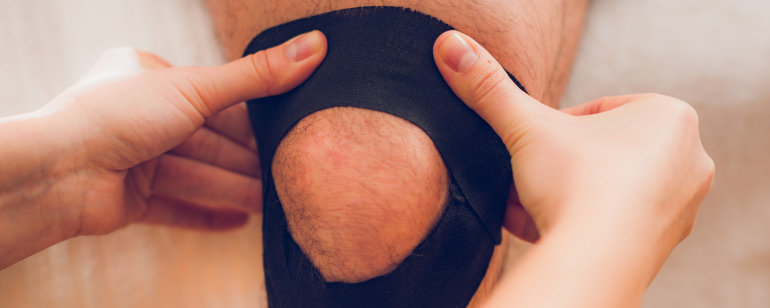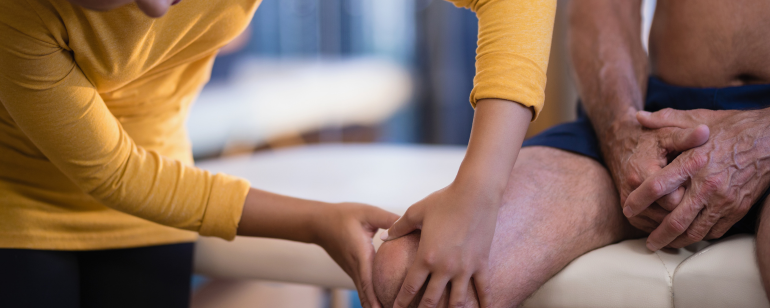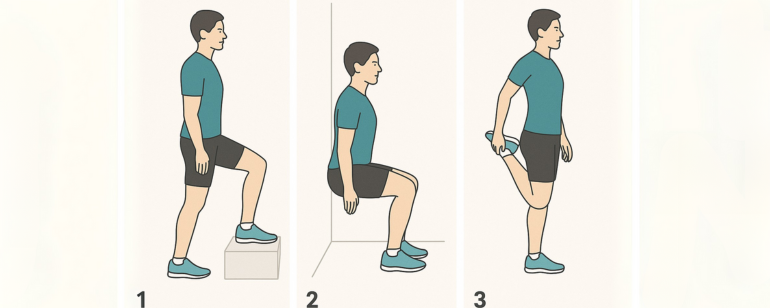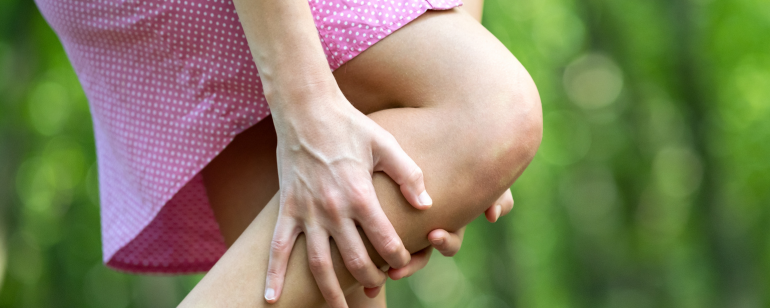Many patients report pain in the knee, especially when climbing stairs. The pain often does not occur with all movements, but specifically when going up or down. The causes can vary – from overloading to structural changes in the joint.
Why climbing stairs is particularly hard on the knee
When climbing stairs, a multiple of the body weight acts on the knee. The joint has to bend, stabilize and move the weight up or down at the same time. If there is a muscular weakness, misalignment or joint change, this additional load quickly leads to discomfort.
Common causes
1. patellar tendinopathy
Irritation of the tendon below the kneecap. Often caused by repeated jumping or bending movements, but can also occur during everyday activities.
2. osteoarthritis
Wear and tear of the joint cartilage changes the sliding movement in the knee. Climbing stairs can be painful as the pressure on the cartilage increases.
3. muscular imbalance
Imbalance between the front and back of the thigh changes the load on the joint. The quadriceps are often too weak or shortened.
4. misalignments
bow legs or knock-knees lead to uneven pressure distribution in the joint.

Procedure in physiotherapy
At Physiotherapie Berlin Mitte Marsch, we determine the exact cause. To do this, we check
- Mobility and stability of the knee joint
- Strength and elasticity of the leg muscles
- Gait pattern and stair climbing technique
- Stress behavior in everyday life
The treatment is cause-oriented and individually tailored.
Possible treatment approaches
Manual therapy to improve joint mobility
Strengthening the thigh muscles, especially the quadriceps and gluteal muscles
Stretching exercises to reduce tensile forces on the joint
Balance training for more stability
Adaptation of movement sequences when climbing stairs

What you can do yourself
- Walk up stairs consciously and without momentum
- Support yourself lightly on the railing when going downhill
- Regular training of the thigh and buttock muscles
- Avoid overloading, especially with acute pain
- If symptoms persist, have them checked by a physiotherapist at an early stage
Exercises for knee pain when climbing stairs
These three exercises strengthen the leg muscles, improve stability and take the strain off the knee when climbing stairs. Perform all movements slowly and in a controlled manner, without pain.
1st step-up on low level
Aim: Strengthening the thigh and buttock muscles
- Place in front of a low step or a stable stool
- Step up with one leg, fully extend the knee
- Descend slowly again
- Repetition: 8-12 per side, 2-3 repetitions
2. mini squat against the wall
Aim: Gentle strengthening of the quadriceps
- Lean your back against the wall, place your feet approx. 30 cm forward
- Bend your knees slowly (max. 45°), hold briefly
- Slowly stretch again
- Repetition: 10-15, 2 passes
3. stretching the front of the thigh
Aim: Reduce tension in the quadriceps
- Reach one foot backwards while standing
- Pull your heel towards your buttocks, keep your knees next to each other
- Feel a slight stretch on the front
- Hold: 20-30 seconds per side, 2-3 repetitions
Note:
These exercises are intended as support and do not replace an individual physiotherapeutic examination. If symptoms persist, a detailed assessment should be carried out.

Conclusion:
Knee pain when climbing stairs is a warning sign. It often indicates incorrect loading, muscular weakness or structural changes. A targeted physiotherapeutic examination and treatment can help to eliminate the cause and make the knee resilient again.
